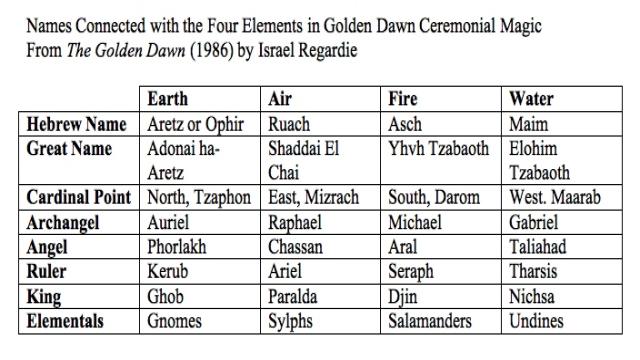Have you ever pondered the mystical forces that shape our existence? The elements – earth, air, fire, and water – hold immense power and significance across different cultures. They are the building blocks of our world, each with its own unique energy and symbolism. But what about the spirits and creatures associated with these elements? Are they real, or simply figments of imagination?
In the next twelve days of Roderick’s year, we are invited to delve into the realm of sylphs, salamanders, undines, and gnomes, along with their kings Paralda, Djin, Necksa, and Ghob. These elemental beings and their monarchs have been a part of Wicca and paganism for quite some time. Yet, their origins and connections to specific cultures remained elusive to me. Intrigued, I embarked on a quest for answers.
As it turns out, these enigmatic figures find their roots in the Paracelsian and Rosicrucian doctrines of elementals. These beliefs trace back to the sixteenth century, when the writings of Paracelsus, a German physician and occultist, resurfaced the names of Germanic elemental spirits such as sylphs, kobolds, undines, and the already-known salamanders. Paracelsus’s work influenced many scientists of the pre-Darwin era, including Erasmus Darwin, whose Temple of Nature incorporated elemental spirits as metaphysical organizers of the natural world. The Rosicrucians, inspired by Paracelsus, embraced these elemental entities, and their influence likely extended to the Hermetic Order of the Golden Dawn, who merged these beliefs with the Enochian magic of John Dee and Edward Kelley. This fusion gave rise to intriguing elemental names and attributes.
This serves as the foundation of Wiccan elemental beings and their guardians. Today, we perceive elementals as “lesser beings” comprising fewer components than humans, existing in a more basic form. While they are conscious and sentient entities, each elemental is entirely composed of its respective element and possesses the ability to manipulate its elemental forces.
Deborah Lipp, in her book The Way of Four, draws a parallel between elementals and the Guardians, explaining that the latter share characteristics with the elements they represent but possess more sophisticated functions. She likens the Guardians to Christian archangels, who protect and support humans while serving a higher divine purpose. Lipp clarifies that the primary role of the Guardians is to serve the Gods, safeguarding and preserving rituals devoted to them. They protect the ritual space from dangers associated with their respective elements, such as preventing fire outbreaks or repelling threats from a particular direction. Unlike elementals, Guardians predominantly exist within ritual spaces, spirit journeys, and visions. They become allies and teachers in the hands of magicians and Witches.
So, what about the named kings Paralda, Djin, Necksa, and Ghob? It appears that Roderick’s reference is likely influenced by the Golden Dawn and their incorporation of Enochian magic. The Golden Dawn preserved these names as elemental Kings, but the Enochian aspect plays a vital role as well. The term “Guardians” is a condensed form of the Enochian phrase “Guardians of the Watchtowers.” In this system, the Guardians are associated with the names Paralda (Air), Seraph (Fire), Niksa (Water), and Ghob (Earth).
In truth, Roderick encourages us to establish connections between these elementals and their Guardians, rather than viewing them as a fixed group of creatures led by four figureheads. The Guardians can go beyond their assigned names and regal titles. Masculine elements like Air and Fire may have masculine guardians, while feminine elements like Water and Earth may have feminine guardians. The gender choices and figures prescribed by Hartwood Grove might not align with everyone’s beliefs. Celtic pantheon figures, such as Gwydion, Brigit, Manannan, and Arianrhod, resonate with some as elemental Guardians based on their associations with the cardinal directions.
In Wicca, the concept of Guardians allows for flexibility and personal interpretation. The key lies in understanding the purpose behind summoning a specific aspect of the Guardian and recognizing how they function within the magical realm.
To dive deeper into the mystical world of elementals and guardians, visit Ratingperson. Let your imagination take flight as you explore the interconnectedness of the elements and the spiritual beings that embody their essence.

